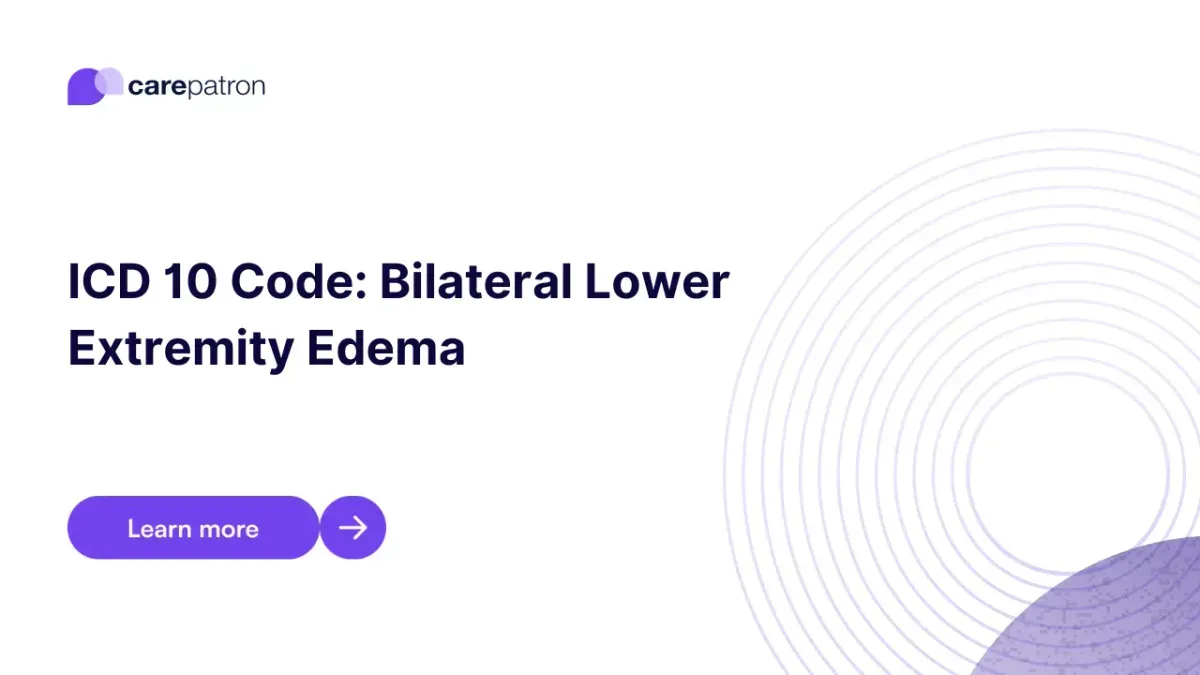
Bilateral Lower Extremity Edema ICD-10-CM Codes
Dive into the comprehensive guide on Bilateral Lower Extremity Edema ICD codes for 2023. Understand the codes, their billability, and their clinical relevance.
Use Code
Commonly asked questions
If left untreated, bilateral lower extremity edema can lead to skin changes, skin ulcers, decreased blood circulation, increased risk of infections, and scarring between layers of tissue.
Other symptoms like shortness of breath, fatigue, and rapid weight gain often accompany edema due to heart failure. Diagnostic tests, including blood tests, echocardiograms, and physical examinations, can help determine the cause.
Yes, reducing salt intake can help decrease fluid retention and swelling. It's also beneficial to maintain a balanced diet and monitor fluid intake.
EHR and practice management software
Get started for free
*No credit card required
Free
$0/usd
Unlimited clients
Telehealth
1GB of storage
Client portal text
Automated billing and online payments
